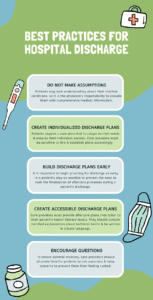Physical Therapy After Fracture
Recovering from a Fracture with Physical Therapy
Suffering a bone fracture can be a painful and challenging experience, but with the guidance of a skilled physical therapist, you can regain strength, mobility, and confidence. Physical therapy plays a vital role in helping you recover fully after a fracture, ensuring you return to your daily activities as quickly and safely as possible. This article explores how physical therapy supports fracture recovery, what to expect during the process, and tips for optimizing your rehabilitation.
Understanding Fracture Recovery
A fracture, or broken bone, requires immediate medical attention to ensure proper healing and alignment. Depending on the severity, treatment may involve manual bone setting (reduction) or a surgical procedure known as open reduction internal fixation (ORIF). After treatment, the bone often needs stabilization through immobilization to promote healing.
Immobilization for Healing
Immobilization is typically achieved using a cast, brace, or sling, depending on the fracture’s location. For simpler fractures, a removable cast may allow gentle movement, while complex fractures or post-surgical cases may require a non-removable cast. If you fracture your shoulder or arm, a sling may be used to keep the area stable. Always consult your healthcare provider to understand your specific immobilization requirements and follow their guidance to protect the healing bone.
Caring for Your Cast or Sling
Proper care of your cast or sling is essential to avoid complications and ensure comfort. Keep the cast dry, avoid inserting objects under it, and monitor for signs of skin irritation or swelling. For slings, practice putting it on and removing it as instructed to maintain hygiene and comfort.
The Role of Physical Therapy in Fracture Recovery
Physical therapy is a cornerstone of fracture rehabilitation, helping you overcome the effects of immobilization, such as stiffness, muscle weakness, and reduced mobility. A physical therapist tailors a recovery plan to your needs, guiding you through exercises and techniques to restore function. Therapy may begin in the hospital, continue at home, or take place in an outpatient clinic, depending on your recovery stage.
Physical Therapy in the Hospital
If you’re hospitalized after a fracture, a physical therapist may visit to assist with early mobility. For leg or ankle fractures, they can teach you how to use assistive devices like crutches, a walker, or a cane. You’ll learn techniques for navigating stairs, getting in and out of a car, or moving safely. For arm fractures, your therapist may guide you on using a sling correctly. Practice these skills under supervision to build confidence and ensure safety.
Home-Based Physical Therapy
Once discharged, some patients require home-based physical therapy, especially if mobility is limited. A therapist will help you adapt to your home environment, using assistive devices safely. They may recommend exercises to improve endurance, strengthen muscles around the fracture site, and maintain weight-bearing restrictions. Your therapist can also assess your home for safety, suggesting modifications like removing trip hazards or adding handrails.
Outpatient Physical Therapy
After your cast is removed or weight-bearing restrictions are lifted, outpatient physical therapy helps you regain full function. Your first visit typically includes an assessment of your range of motion, strength, pain levels, flexibility, swelling, and gait (for lower extremity fractures). Based on this evaluation, your therapist designs a personalized treatment plan to address your specific needs.
Key Components of Physical Therapy After a Fracture
Physical therapy after a fracture focuses on reversing the effects of immobilization and restoring functional mobility. Here’s what you can expect during your sessions:
Overcoming Immobilization Effects
Prolonged immobilization can lead to muscle weakness, joint stiffness, and reduced mobility. Your therapist will guide you through exercises to improve range of motion and strengthen the muscles surrounding the fracture. For leg fractures, therapy may include gait training to help you transition from assistive devices to walking independently. For arm or shoulder fractures, functional tasks like reaching or grasping may be emphasized.
Managing Pain and Swelling
To reduce discomfort, your therapist may use modalities like ice, heat, or electrical stimulation to manage pain and swelling. While these passive treatments can help, active participation in exercises is crucial for long-term recovery. Communicate openly with your therapist about any pain to ensure your program is adjusted appropriately.
Scar Tissue Management
If surgery was required, scar tissue may limit mobility. Your therapist may perform scar massage or mobilization techniques to reduce adhesions and improve tissue flexibility. These interventions help ensure the surgical site heals properly and doesn’t restrict movement.
Targeted Exercises for Recovery
Exercises are tailored to the fractured area and nearby joints to restore strength and flexibility. For example:
- Elbow fracture: Exercises for the elbow, wrist, and shoulder to maintain joint mobility.
- Tibia fracture: Activities targeting the knee, ankle, and hip to support overall leg function.
Your therapist will ensure exercises are safe and progressive, preparing your body for everyday activities like walking, lifting, or climbing stairs.
How Long Does Physical Therapy Last?
The duration of physical therapy varies based on the fracture’s severity, your overall health, and your healing rate. Simple fractures may require a few weeks of therapy, while complex fractures or surgical cases could take months. Regular communication with your therapist and healthcare provider ensures your program aligns with your recovery goals.
Tips for a Successful Recovery
To maximize the benefits of physical therapy, follow these practical tips:
- Stay Consistent: Attend all therapy sessions and perform prescribed home exercises regularly.
- Follow Restrictions: Adhere to weight-bearing or lifting limits to protect the healing bone.
- Ask Questions: Clarify any concerns with your therapist or doctor to stay informed.
- Monitor Progress: Track improvements in pain, mobility, or strength to stay motivated.
- Maintain a Positive Mindset: Recovery can be gradual, but persistence leads to results.
Is Physical Therapy the Same as Physiotherapy?
The terms “physical therapy” and “physiotherapy” are often used interchangeably, as both involve similar techniques to restore movement and function. However, some regions or practitioners may distinguish them based on specific approaches or training. Consult your healthcare provider to understand the terminology in your area.
💡 Frequently Asked Questions
As a result what do actual physical procedure and rehab contain just after a fracture?
Answer coming soon. We are working on detailed responses to this common question.
Are Physiotherapy and Actual physical Treatment method the Identical Factor?
Answer coming soon. We are working on detailed responses to this common question.
How Very long Should really PT Past?
Answer coming soon. We are working on detailed responses to this common question.
⭐ Expert Tips
- Include seasonal or trendy variations to keep your meals exciting.
- Highlight prep shortcuts or time-saving techniques for busy cooks.
- Consider dietary restrictions and include substitution suggestions.
✅ Key Takeaways
- These dinner ideas are perfect for impressing guests or enjoying special occasions.
- Choose recipes that match your skill level and available kitchen tools.
- Presentation and taste both contribute to a memorable dining experience.
📣 Join Our Community
Want more inspiration like this? Subscribe to our newsletter for weekly dinner ideas and cooking tips!





